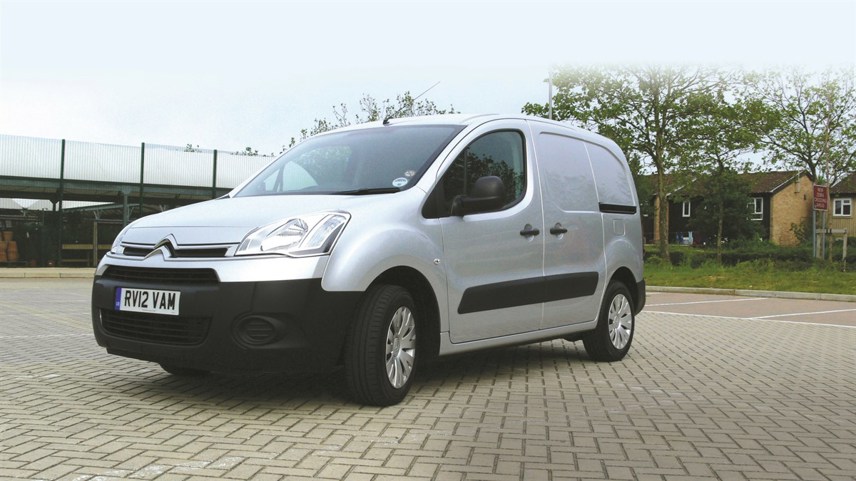Review
The Citroën Berlingo broke the small van mould in 1995, being the first small LCV to be built from scratch as a commercial vehicle. Other rivals at the time were cars with van bodies added.
Since then this van has sold by the bucketload and has metamorphosed over the years into the handsome beast pictured on this page.
The arrival of the smaller Nemo in 2008 saw the Berlingo grow in size and now this van has two unique features – it is the only small van to offer three seats in the front (along with its twin, the Peugeot Partner) and the only vehicle in the sector to offer a free Trafficmaster sat-nav and stolen tracking system. Now another set of tweaks has further improved the cost-effectiveness and stylishness of the Berlingo.
The underbonnet changes are the items in which fleet managers will be most interested. New Euro V- compliant engines offer better fuel economy and lower CO2 emissions and the model on test here, the e-HDI, returns a healthy 57.6mpg on the urban cycle while emitting 129g/km of CO2.
The e-HDI moniker means that this model features fuel-saving devices such as stop-start, which uses a micro-hybrid starter-generator for smooth restarting and a regenerative braking system which recovers and stores energy that would otherwise be lost.
Our short-wheelbase version offers 3.3 cubic metres of space but the test model had one of those clever fold-down passengers seats that increases the volume to 3.7 cubic metres, a standard fitting on LX models. Other standard goodies include ABS brakes, remote central locking and electric/heated mirrors.
Sadly only on the options list, unlike its rival the Ford Transit Connect, is electronic stability control, which adds £250 to the standard £13,465 (ex-VAT).
Other options include air-con at £600, rear parking sensors at £190 and metallic paint at £315.
Behind the wheel
Can there ever have been a more ubiquitous van than the Berlingo? You can hardly go down any street in the UK without meeting one.
Of course, the model on test here is a very different animal from the original one (which you still see out and about quite a bit) and we all really like its styling and practicality.
Despite the Berlingo boasting an official fuel economy figure of 57.6mpg, the reading on the dash never went above 49.5mpg during our test week. Mind you, this is probably because most of our driving was on major roads and motorways, so the useful (and fuel-efficient) stop-start system hardly ever cut in – as it would in the official mpg test.
When it did, what a smooth start-up it achieves, especially against rivals which simply use the starter motor. On a couple of occasions in traffic I mistakenly thought it hadn’t fired up at all.
General ride and handling are superb, with nicely weighted power steering. The 90bhp 1.6-litre diesel powerplant feels lively in the extreme as max torque comes at a very low 1,500rpm.
One problem for me, though was a lack of legroom in the cab, caused by the mesh bulkhead being placed a little too near the front.
The metal mesh as opposed to solid metal also allows quite a bit of noise from the rear to intrude into the cab.
Citroën deserve praise for giving away the Trafficmaster system. It works easily and brilliantly and acts as much more than a sat-nav unit.
It warns of speed cameras ahead, acts as a stolen vehicle tracking system and, by hitting an icon on the touchscreen, you can actually talk to someone live at Trafficmaster HQ in Oxfordshire and ask for anything from help in an accident to the location of your nearest Indian takeaway!
Verdict
The Citroën Berlingo was already a cracking little van and is now even better with all these fuel-savings extras, which can only further enhance its fleet credentials.
















